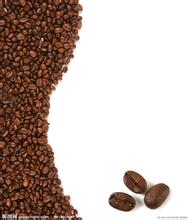Introduction to the characteristics of grinding degree of coffee bean classification standard taste and flavor description method
Most Caribbean and Central American countries express quality in terms of altitude. For example, the eastern part of Costa Rica produces LGA (Low Grown Atlantic Atlantic low altitude), MGA (Medium Grown Atlantic Mid-Atlantic altitude) and HGA (High Grown Atlantic Atlantic High altitude); West Bank slopes produce HB (Hard Bean hard beans), MHB (Medium Hard Bean Intermediate hard beans), GHB (Good Hard Bean excellent hard beans) and SHB (Strictly Hard Bean very hard beans). Beans are hard, and the higher the altitude, the higher the price. Costa Rica's best plantations mark their bags and elevations, and like Nicaragua, Costa Rica uses the name of the region with the flavor of the country. Guatemala's elevation is relatively vague, from 700 to 1700 meters above sea level: "Good Washed" (good water washed beans), "Extra Prime Washed" (super water washed beans), "Semi Hard Bean (SH)" semi-hard beans, "Hard Bean (HB)" hard beans, "Fancy Hard Bean" super hard beans and "Stictly Hard Bean (SHB)" very hard beans.

Harvest year: 2012-the year is for roasters' reference, so the year is usually not marked on the label of roasted ripe beans on the market.
In the coffee beans sold in the market, in order to reduce the trouble and identification burden of consumers, they generally do not make such complicated labels. There may be great differences in the flavor of coffee beans in different small producing areas and different years. Professional roasters will taste the raw coffee beans of the same year in different producing areas every year, and adjust the way of roasting and blending, so that consumers can get coffee with stable flavor and slight difference.
However, although the coffee taste indication described above is a common practice of coffee roasters, because the domestic coffee market is in its infancy, consumers can not taste the differences in various beans, so the coffee beans sold on the market are mixed. There is often a phenomenon of inferior quality, so when consumers buy high-level coffee beans, they still need to keep their eyes open and carefully identify trustworthy businesses.
The name of the country is immediately followed by the marking of small producing areas. Take Ethiopia-Ethiopia (Ethiopia Yirgacheffe) as an example. Ethiopia's Ethiopia is the name of the coffee producing country, indicating that it is a "single coffee". Yega Xuefei Yirgacheffe is a long and narrow high-altitude producing area in the Sidamo producing area of Ethiopia (Sidamo). Different small producing areas mean different flavor characteristics. For example, places in southern Ethiopia near Somalia produce the famous
Ethiopia-Harald Mocha (Ethiopia Harrar). Harald mocha has wine-like aromas, blueberry or grape flavors, thick palate, fresh and bright Yega Chevy, citrus or lemon peel aromas, and a thin palate.
However, some coffee beans have a list of names immediately after the name of a small producing area, which may be the name of a coffee farm, cooperative, or raw bean processing plant. For example, the long list of names of Guatemala, Antigua and Los Crop (Guatemala Antigua SHB- Finca Los Volcanes 12) tells us the following information:
Producing country: Guatemala (Guatemala)-Guatemala is a famous coffee producer in Central America
Important Notice :
前街咖啡 FrontStreet Coffee has moved to new addredd:
FrontStreet Coffee Address: 315,Donghua East Road,GuangZhou
Tel:020 38364473
- Prev

Introduction to the Flavor characteristics of Matari Mocha Coffee and the different methods of latte
Matari mocha: the best in mocha coffee, like top red wine, rich tropical fruit flavor, infatuated, rich and varied flavor with unique sunshine flavor, fine taste, can also feel a hint of chocolate sweetness in the tail rhyme, the taste is strong and worthy of careful taste. Product name: Mattarimoka, Yemen Yemen Mattari Mocca Origin: Ye
- Next

Flavor description of Ka Lu Meng Shengdou Coffee introduction to the characteristics of Grinding degree and Taste treatment of varieties
Boutique coffee bean coffee is considered to enter Japan in the 18th century, coffee lovers began to rise a little bit in the second half of the 19th century, and now coffee has become a favorite drink for both men and women, young and old. And the Fuji Royal brand, which is famous for making coffee roasters and bean grinders, is also indispensable in the topic of coffee industry in Japan.
Related
- Guji coffee producing area of Guji, Ethiopia: Humbela, Shakiso, Wulaga
- What is the most expensive variety of Qiloso in BOP multi-variety group?
- How to store the coffee beans bought home?
- Why are Yemeni coffee beans so rare now?
- Ethiopian Sidamo all Red Fruit Sun Sun Santa Vini Coffee beans
- SOE is mostly sour? What does it mean? Is it a single bean? what's the difference between it and Italian blending?
- Is Italian coffee beans suitable for making hand-brewed coffee?
- How to choose coffee beans when making cold coffee? What kind of coffee beans are suitable for making cold coffee?
- Just entered the pit to make coffee, what kind of coffee beans should be chosen?
- Can only Japan buy real Blue Mountain Coffee? What are authentic Jamaican Blue Mountain coffee beans?

